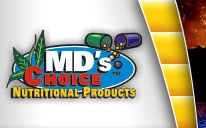Vitamins
![]()
| Pantothenic Acid |
Chemical
Functions
Sources
Metabolism
Requirements
Deficiency
Toxicity
- Composed of pantoic acid and b-alanine joined via an amide linkage
- Structural specificity
- D form is biologically active
- The alcohol corresponding to pantothenic acid is active in mammals
- Synthesis of coenzyme A (Figure 9.20 from Groff et at., 1995)
- Component of Coenzyme A necessary for energy storage as well as release
- CoA forms this esters with carboxylic acids and can transfer acyl groups
- Acetyl CoA condenses with oxaloacetate to enter the tricarboxylic acid cycle
- Oxidative decarboxylation of pyruvate and (a-ketoglutarote requires pantothenic acid plus thiamin, riboflavin, and niacin
- Acetyl CoA reacts with acetoacetyl CoA in cholesterol synthesis and ketogeneses
- Succinyl .CoA along with glycine is necessary for the initial vitamin B6-dependent step in her:ne synthesis
- Acetyl CoA condenses with activated C02 to form malonyl CoA in the first step in fatty acid synthesis
- Phospholipid and sphingomyelin production use acyl Co A
- Involved in protein acetylation processes which affect protein functions
- B. Component of 4'-phosphopantotheine
- Prosthetic group on acyl carier protein (ACP)
- ACP acts as the acyl carrier in synthesis of fatty acids
- ACP is a necessary component of the fatty acid synthase complex
- Prosthetic group of GTP synthase which converts succinyl Co A to GTP + Co A
- Prosthetic group on acyl carier protein (ACP)
- As its name implies (Greek pantos means everywhere), pantothenic acid is widely distributed in nature
- Food sources include meats, egg yolk, legumes, whole-grain cereals, and broccoli
- Feed sources include alfalfa hay, peanut meal, cane molasses, yeast, wheat and rice bran, and cereal seeds
- Limited data. No reported absorption or transport mechanisms
- CoA is dephosphorylated during metabolism
- Pantothenate is excreted as such primarily in urine. Urinary excretion is thought to reflect dietary intake
- Same fecal excretion occurs
- Effect of environment
- Excretion of pantothenic acid is greater under hot moist conditions
- Effect of other nutrients
- High protein spares requirement
- Vitamin B12 spares pantothenic acid if diet is marginal in choline or methionine
- Deficiency of folic acid and biotin may interfere with utilization of pantothenic acid
- C. Recommended allowances
- Human........5-10 mg/day probably adequate. American diet contains 6-20 mg/day
- Swine..........4-6 mg/lb feed
- Poultry.........4 mg/lb feed
- Human
- Burning feet syndrome - abnormal skin sensations in feet and lower legs
- Exacerbated by warmth
- Diminished with cold
- Vomiting, fatigue, weakness
- Deficiency associated with:
- Alcoholism (decreased intake)
- Diabetes mellitus (increased excretion)
- Inflammatory bowel diseases (impaired absorption)
- Burning feet syndrome - abnormal skin sensations in feet and lower legs
- Swine
- Alopecia, atrophy of epidermis, loss of hair follicles
- Diarrhea, sometimes containing mucous or blood
- Mucosa diffusely hyperemic and slightly edematous
- Gait resembling "goose-step"
- Extensive changes in intestine, especially color
- Adrenal enlargement
- Nerve degeneration
- Chicken
- Dermatitis, eyelids stick together, scabs on mouth, vent, and feet
- Liver damage
- Changes in spinal cord
- Has not been reported in humans
- Intakes above 100 mg may increase niacin excretion
- Intakes up to 10 g for up to 6 weeks caused no problems
- Intakes up to 20 g may cause wild intestinal distress and diarrhea
![]()
Vitamins

For individual consultation or questions about our products, call
1-800-628-0997
Click Here for a Printable Version of This Page
